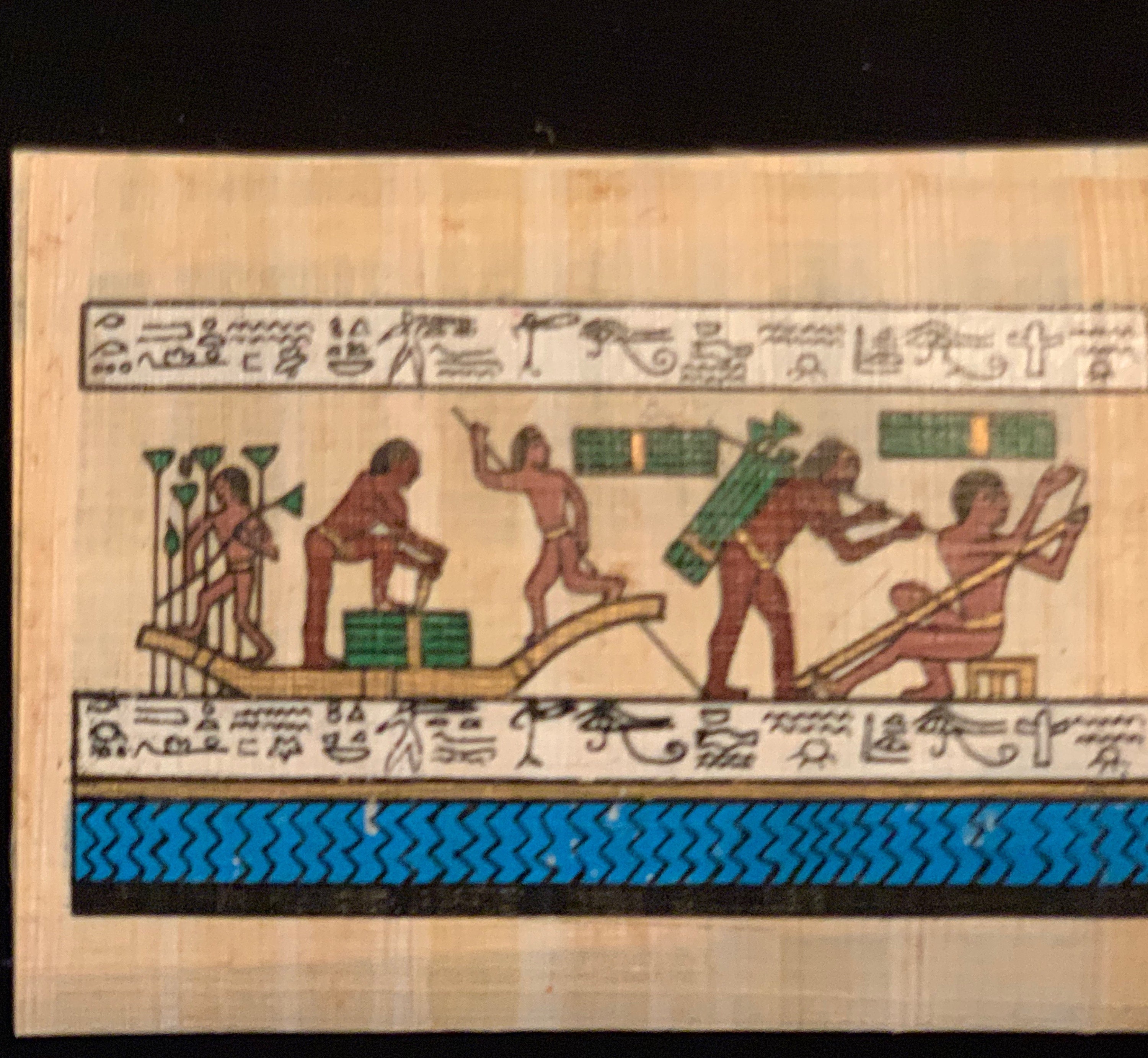

Paper contrasts with papyrus in that the plant material is broken down through maceration or disintegration before the paper is pressed. This effect can be seen in many ancient papyrus documents. When used in scrolls, repeated rolling and unrolling causes the strips to come apart again, typically along vertical lines. The result is very strong, but has an uneven surface, especially at the edges of the strips. The two layers are then pounded together into a sheet. A second layer is then placed on top, with the strips running perpendicular to the first. Papyrus is prepared by cutting off thin ribbon-like strips of the interior of the Cyperus papyrus, and then laying out the strips side-by-side to make a sheet. Papyrus is a thick, paper-like material produced from the pith of the Cyperus papyrus plant which was used in ancient Egypt and other Mediterranean societies for writing long before paper was used in China. The word "paper" is etymologically derived from papyrus, Ancient Greek for the Cyperus papyrus plant.

As the papyrus is worked, it tends to break apart along the seams, leading to long linear cracks and eventually falling apart. In contrast to paper, papyrus has an uneven surface that visibly retains the original structure of the ribbon-like strips that make it up. In the 20th century with the advent of plastic manufacture, some plastic "paper" was introduced, as well as paper-plastic laminates, paper-metal laminates, and papers infused or coated with different substances to produce special properties.
#Paper of papyrus skin
Nor is true parchment considered paper: used principally for writing, parchment is heavily prepared animal skin that predates paper and possibly papyrus. Later improvements to the papermaking process came in 19th century Europe with the invention of wood-based papers.Īlthough there were precursors such as papyrus in the Mediterranean world and amate in the pre-Columbian Americas, these are not considered true paper. By the 13th century, papermaking was refined with paper mills using waterwheels in Spain. By the 11th century, papermaking was brought to Europe, where it replaced animal-skin-based parchment and wood panels. During the 8th century, Chinese paper making spread to the Islamic world, replacing papyrus. This plant-puree conglomerate produced by pulp mills and paper mills was used for writing, drawing, and money. The first paper-like plant-based writing sheet was papyrus in Egypt, but the first true paper, the first true papermaking process was documented in China during the Eastern Han period (25–220 AD), traditionally attributed to the court official Cai Lun. Paper is a thin nonwoven material traditionally made from a combination of milled plant and textile fibres.

From the 1637 Tiangong Kaiwu of the Ming dynasty. Woodcuts depicting the five seminal steps in ancient Chinese papermaking.


 0 kommentar(er)
0 kommentar(er)
